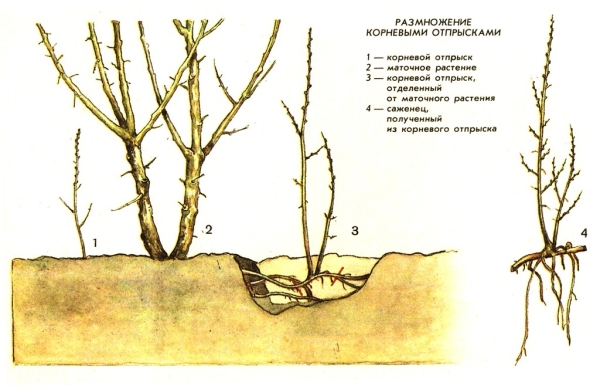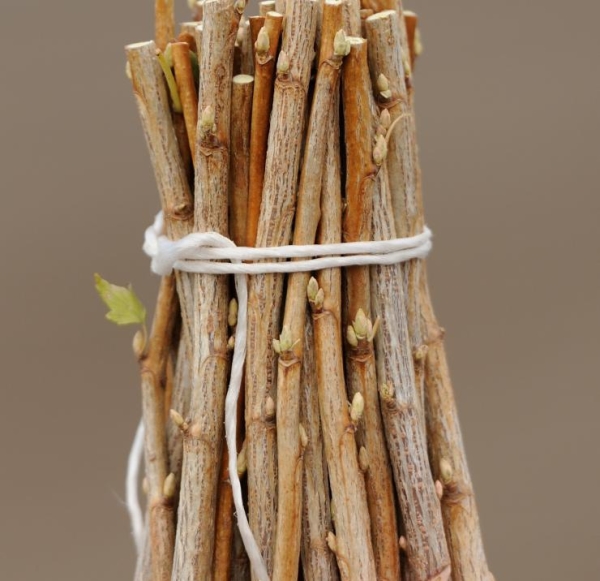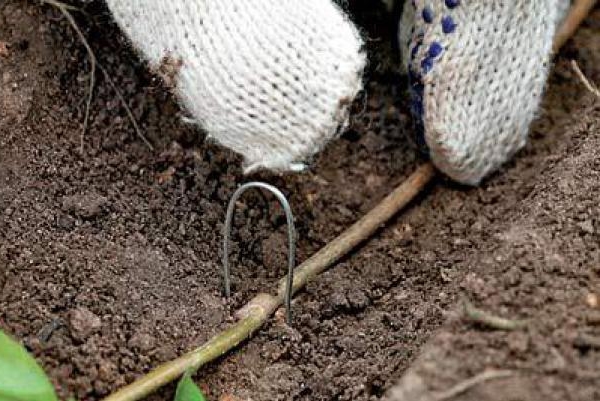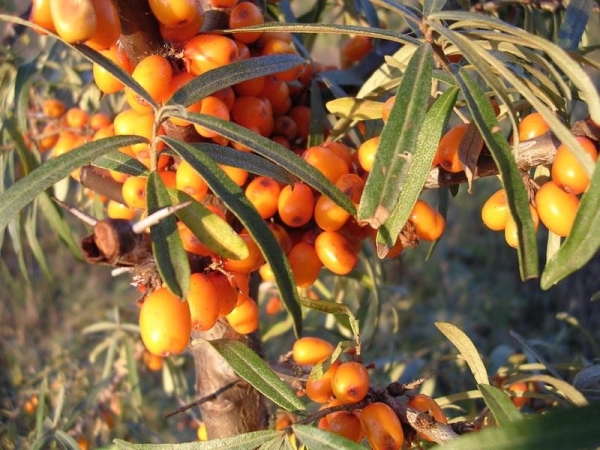Sea buckthorn fell in love with many gardeners for its healing properties. Many beginning gardeners grow sea buckthorn from acquired seedlings. As a rule, finding quality planting material is quite difficult.
Sea buckthorn is dioeciousThis means that it is capable of being a male plant or female, therefore, to obtain a high-quality crop, trees should be planted together.
Table of contents
Methods for breeding sea buckthorn
Useful sea buckthorn fell in love with many gardeners.Presently many different varieties are bred.
There are several ways of breeding sea buckthorn:
- understory;
- layering;
- seeds;
- lignified and green cuttings.
Each grower shaves the best option. for myself. Let us consider in more detail each of these methods.
Overgrown
For those gardeners who want quickly propagate the buckthorn bushes, should take into account the method of breeding undergrowth.
Landing material acts sprouts, get it by injuring the buckthorn roots with a shovel. Damage can also happen unintentionally, since sea buckthorn roots cover long distances.
When an offspring appears, it is necessary to provide him with the necessary care in the form of hilling and keeping him wet.
Articles that may be of interest to you:
Then dilute the mound (next spring), you need to do it carefully, with your hands,then horizontal movement of the knife to separate the scion from the root, by that time it will acquire already its roots.
After which it is necessary to transplant (the place is prepared from autumn). In the future, you must regularly feed the plant and systematically water it.

Lignified cuttings
Preparation of lignified cuttings carried out in NovemberBy choosing suitable cuttings at least 5 mm thick, they must be hidden in the snow. At the onset of spring, the cuttings are cut, the main length of the cutting after pruning is 20 cm.
They must then be soaked in water.. The cuttings can be left in the water for two weeks, during which time the buds have time to blossom, small rudiments of roots appear.
Site preparation for planting is carried out in advance. During autumn digging, up to 9 kg of humus per 1 m is introduced into the soil. In the spring, they dig again and carefully level the place for planting.
The bed must be at least 1 meter wide., it should not be too high, some even tread paths on the sides in order for the ridge to slightly protrude over the territory.
When the soil temperature reaches 5 degrees, cuttings are carried out. Leaving several buds on the surface, they carry out abundant watering of the cuttings, after which they mulch the soil with fertilizer.

After the cuttings are planted, it is necessary almost every day to monitor the condition of the soil, its moisture, watering of long cuttings is carried out with a frequency of 1 every 4 days, short - every day.
Some seedlings reach standard sizes by the end of the season and the very next year in spring you can transfer to a permanent place.
The advantages of this method:
- the method does not require special skills and is suitable for amateur gardeners;
- The result in the form of a clone of the mother plant can also be considered an advantage.
Disadvantages: cuttings do not survive well at low humidity.
Green cuttings
This type of sea buckthorn breeding carried out from June to July. First of all, cuttings are cut (10 cm), for this you need a sharp knife.Then make the lower cut and the top.
For good rooting, cuttings need to be treated with growth substance, you can use heteroauxin proportions: 1 tablet per 1 liter of water.
After 16 hours, the cuttings need to be rinsed and planted in the soil, then covered with foil or can. Best if the soil is light, the most suitable type of soil is peat. Cuttings need to be deepened by 4 cm.
To protect the cuttings from the disease called black leg, it is necessary to water them with a solution which contains potassium permanganate.
The film or the bank is removed from the cuttings after they have taken root. The cuttings are transferred to a permanent place a year after they have taken root.
Benefits: one hundred percent survival rate.
Disadvantages: quite a laborious process, more suitable for experienced gardeners.

How to propagate by dividing the bush
To this kind of breeding usually resorted when transferring plants from one place to another.
Favorable time for the procedure - early spring or late autumn, but before the frosts hit.
Bushes dig up, pruned all the old branches, leaving only healthy. Shaking the excess pieces from the roots, divide the bush into parts with the help of a garden shears.
Carrying out the division of the bush, it is necessary to control the presence of a healthy root system in each part of the bush. The seedling must have developed roots old rhizomes are removed, everything else needs to be trimmed.

Layering
This method is loved by many newcomers. in gardening, because it is effective in growing quality seedlings.
Reproduction by layering as follows.: take the lowest branch of the sea buckthorn and closely press and plow down to the ground, leaving the tip of the branch on the surface. Then it is plentifully sprinkled with humus and during the summer they support moisture.
By the fall, each stem gives several shoots.With the onset of spring, the strongest specimens are selected and planted in a permanent place.
Benefits Such a method are as follows:
- all biological characteristics of the shrub are transmitted;
- good rooting rate.
Of disadvantages The following can be singled out: a few annual shoots, the trunk of a fruiting tree is laid bare.

Seeds
Seed propagation is the easiest way. With this kind of breeding, the properties of the variety do not go over to seedlings; moreover, more than half of the seedlings are male.
Seed reproduction in stages:
- Seed collection with high-quality and healthy bushes sea buckthorn. The seeds are extracted by the following method: the fruits are crushed, the juice is separated, the pulp is washed several times with water through calico, and then left to dry in the shade. After drying, the seeds are separated from the pulp and skin.
- After harvesting, seed must be provided. safe storage. Seeds placed in a paper bag should be kept in a dry and warm room.
- Sowing. In suitable conditions, sea buckthorn seeds are able to maintain their properties for 3 years. It is possible to sow seeds in the spring, as well as in the fall. From many tree species, sea buckthorn seeds are cast by the fact that they do not have a dormant period, they sprout after harvest and during dry storage. Sea buckthorn seeds are planted before frost, in early November. It is not recommended to sow earlier, as the seeds germinate very quickly, which may cause the seedlings to freeze. In spring sowing, seeds are usually stratified.
Best time to plant: fall or spring?
Sea buckthorn is difficult to tolerate cold winters, vegetation can begin very early.
Planting or transplanting is best done in early spring.. Saplings with an open root system, it is extremely important because in the process of transplanting the plant loses some of the roots.
In the case when the seedling is in a container for a long time (more than 1 year), the task of transplanting is simplified.It is possible to replant a plant from the container at all seasons of the year.
Orientation is still worth the summer and spring, as in this case, the seedling will have time to build up a good root system before winter, which will allow it to more easily transfer the frosts.
Each method has its own characteristics, advantages. Some methods can not be implemented without a certain experience, and equipment.
Beginners should focus on simpler methods. reproduction of sea buckthorn, and with the acquisition of the skill to move to a more complex level and then the result in the form of beautiful, fruit-bearing trees will not take long.
Agricultural buckthorn:
